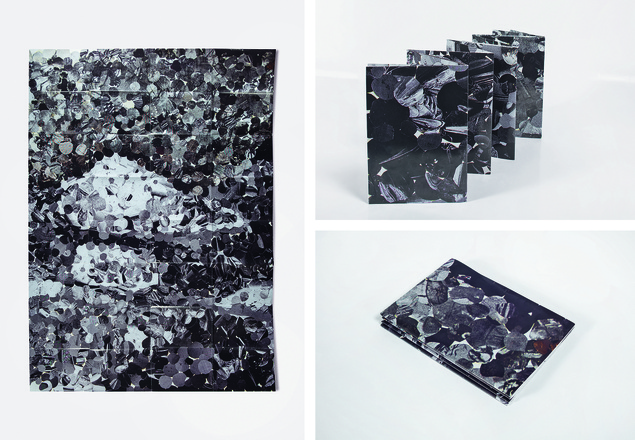Vera Palme
CCTV (2025)
Vera Palme’s practice, by reflecting on both the history of painting and the conditions under which pictures operate and circulate, utilizes moments of disruption in cycles of engagement and processes of replication. For her first edition for TEXTE ZUR KUNST, Palme chose to work with reproductions of historical still lifes from vintage catalogues that had previously served as reference material for her exhibition “Immer realistischere Malerei” (“Ever More Realistic Painting,” 2024) at Galerie Buchholz. Among the works in the show were two pastose pointillistic paintings in blue-mold hues that were inspired by food still lifes by the Flemish artist Clara Peeters (1594–1636). For “CCTV,” Palme fed reproductions of similar paintings into a multistage process whose result is modular and multidimensional: she collaged hand-cut circular fragments of mostly monochrome images to produce an abstract motif that bears a distant formal resemblance to the holes in the texture of certain cheeses. Its blurred and rasterized passages and colorful accents derive from disparate printing qualities and engender a structure that corresponds both to the 3D pointillism of Palme’s “cheese” paintings and to fundamental challenges of processes of reception and translation across media. To take her exploration of the latter with its implications for a material aesthetics one step further, Palme had the original reproduced as a large-format art print that can be folded to frame various segments or to make an object. In this way, she opens up the closed technology referred to in the title and involves us in an unfinished process: through use of the fold, which emerges as an integral component of the work, the beholder leaves an ever-deeper mark on the motif, speaking to the act of looking at art as one of unpacking.

